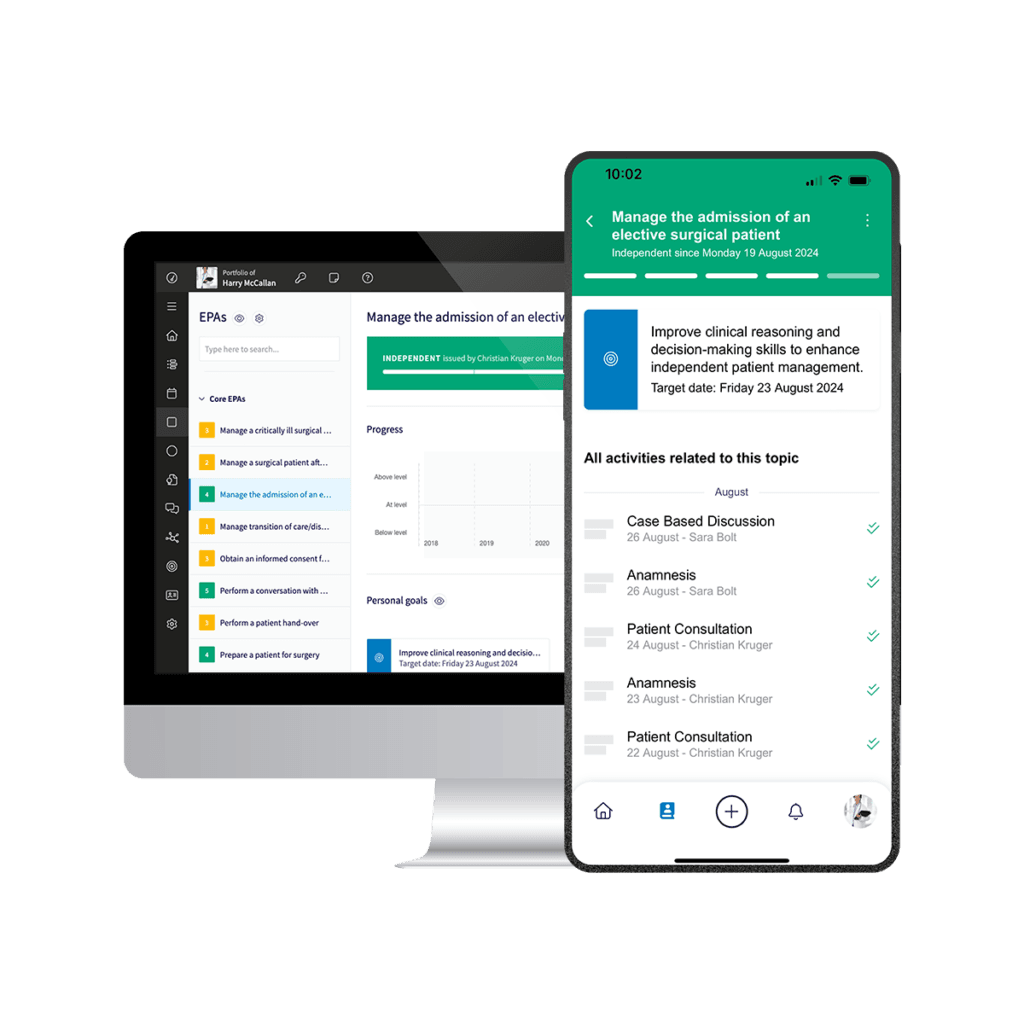A digital portfolio system is crucial for effectively implementing EPA-based medical education. This article outlines the essential portfolio functionalities to bring your training program into practice.
Are you struggling to bring your EPA-based training program from theory into the workplace? Do you have the feeling that you constantly have to encourage staff members to participate in your training program?
In that case, a well equipped digital portfolio system is the bridge between the theory and bringing your training plan into practice at the workplace. In this article, we outline five essential portfolio functionalities for bringing your training program to life in practice.
1) Giving feedback should be extremely easy
The lion share of medical education takes place at the workplace. Trainees experience during their whole training program countless short feedback moments from their trainers. Collecting and organizing this feedback is important to turn them into effective and valuable teaching moments.
However, this is a big challenge during the busy workdays. Nobody has time to look for a computer, login into their account or mailbox and fill in long evaluation forms. Therefore, a portfolio should offer a seamless mobile experience, allowing educators to provide quick and effective feedback without disrupting their workflow.
2) Making shared entrusability decisions
The decision to declare a trainee competent for a specific EPA or other skill is not something to take light handed. You might have worked together or seen the learner working together with other colleagues. Together with the validated feedback moments this might give you a representative first overview of the current competency of the learner on the specific EPA or other skill.
In addition to this, it has shown that a group of trainers will reach a more careful judgement if they first discuss with each other what judgement they have and what considerations underlie it. In this way, all educators feel free to also bring in the more subjective aspects such as gut feeling – especially in case of doubt or a ‘gut feeling’ – and to discuss this with fellow trainers. This is called the Clinical Competency Committee and it is a crucial part of EPA based training. Because it is almost impossible to have an in-person meeting with all of the trainers, this process should be able to be done digitally and integrated into the portfolio system.


3) Graphic overview of progess per EPA
Individual learning paths can differ within EPA based training programs. Some trainees progress fast, others take a little bit longer. Insights into the current supervision levels of a learner is important to adapt your supervision to; insights into the feedback of other trainers helps to detect knowledge gaps.Because this information is actively used during shifts, a portfolio solution should provide clear and accessible graphic overviews.
4) Integrable with student information systems
Even though the lion’s share of medical education takes place in practice, theoretical knowledge remains crucial for every program. Scores on knowledge tests, attendance of specific classes or training, and other educational activities serve as key indicators of a trainee’s competence in the Knowledge component of an EPA. This type of information is typically gathered in Student Information Systems such as Canvas and Brightspace.
In addition to these academic records, validated competence certificates for each EPA are essential, as they are mandatory for obtaining a diploma. To ensure seamless access, these certificates should also be integrated into the Student Information System.
It is therefore crucial that a portfolio should be integrated within existing student information systems, so that all essential educational data remains easily accessible in one central place.
5) Give space to personal learning paths
Personal learning paths are more and more important within Medical Programs. Often, there is a common trunk which trainees have to attend that is being followed by specific rotations, EPAs or other parts of the curriculum depending on their speciality or preferences. These parts can also be in different physical locations such as different departments within the hospital, an affiliated hospital or a rehabilitation clinic.
To effectively support these individualized paths, the portfolio should be accessible at all times and seamlessly adapt to the learner’s learning trajectory.
Reconcept EPA Portfolio
Implementing a EPA portfolio that is aligned with EPAy-based medical education in practice requires the right tools and functionalities. A well-equipped digital portfolio system not only simplifies feedback collection but also ensures structured entrustment decisions, clear progress insights, seamless system integrations, and support for personalized learning paths. By choosing a portfolio solution that meets these essential requirements, you create an environment where learning naturally integrates into daily practice, without unnecessary administrative burdens.
Reconcept EPA Portfolio provides the essential tools and functionalities to integrate an EPA-based framework into daily medical practice, ensuring a smooth and effective transition from theory to workplace learning. Discover how our platform can help you bring EPA-based medical education to life.
Download our EPA portfolio functionalities checklist
We hope this article has given you valuable insights into the essential functionalities of EPA portfolios. We created a checklist with all essential functionalities that are useful to find the right EPA portfolio for you. Simply fill in the form below, and we’ll send it directly to your inbox!
For all other articles and webinars, visit our EPA learning hub!


